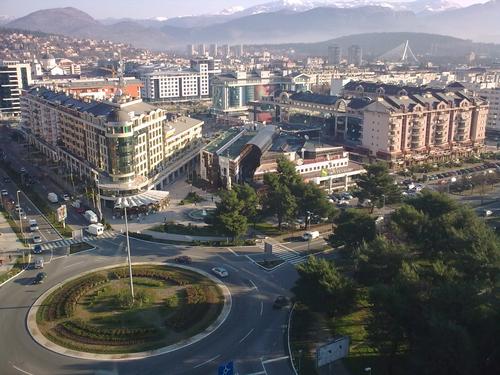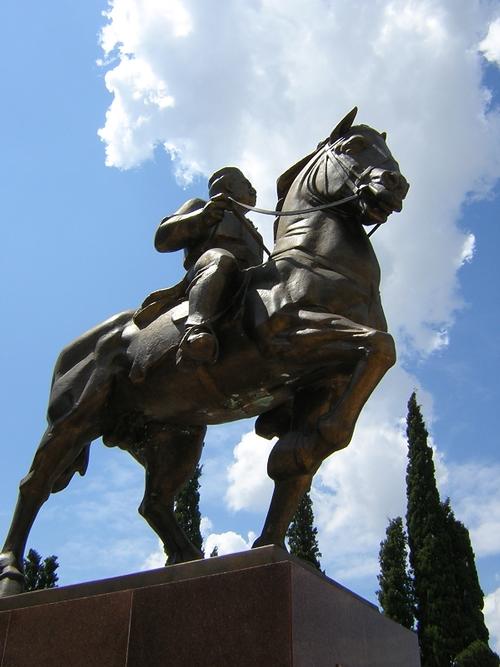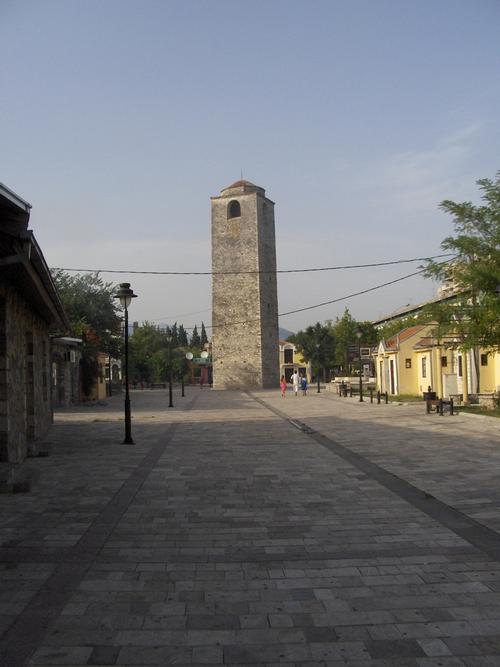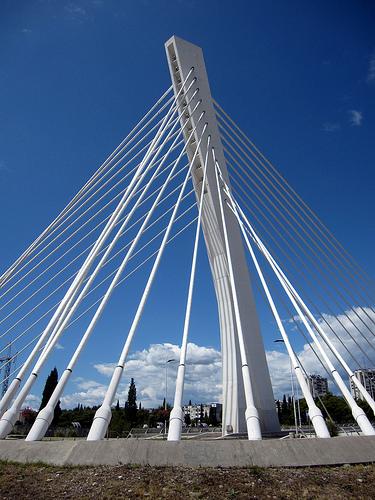MONTENEGRO
Podgorica

Podgorica
Podgorica
Podgorica is the official commercial and cultural centre of Montenegro. It is a relatively new city with many modern buildings, city parks and other greenery.
The city is rich in cultural and historical monuments. Podgorica means 'under the hill', because it is situated between the mountains.
Location
 PodgoricaPhoto: Nije bitno CC 3.0 Unported no changes made
PodgoricaPhoto: Nije bitno CC 3.0 Unported no changes made
The capital of Montenegro is built in the middle of 5 rivers: the Zeta, the Moraca, the Ribnica, the Cijevna and the Sitnica. The city is situated 44 metres above sea level, centrally in Montenegro and in the vicinity of various winter sports resorts. Podgorica has an area of 13,812 km² and an estimated population of 675,000.
Weather
Podgorica is located on the central plain of Montenegro, where there is a Mediterranean climate. In the winter months the average temperature is 5 degrees. In the summer, the average temperature reaches 26.5 degrees. The highs and lows are not bad: in the summer, the temperature can reach 40 degrees and in the winter, the mercury can drop below -10 degrees.
History
 Podgorica Monument of King NicolaPhoto: MrSco CC 2.0 Generic no changes made
Podgorica Monument of King NicolaPhoto: MrSco CC 2.0 Generic no changes made
The year Podgorica is first mentioned in history books is 1326. This makes it one of the oldest settlements in the Balkans.
From the beginning Podgorica had several rulers including the Illyrians and the Romans. The city changed its name several times. King Nikola was Prince of Montenegro from 1860 to 1910 and King from 1910 to 1918.
During the First World War Podgorica was occupied by the Hungarians. After this war Montenegro became part of Yugoslavia in 1929. The Second World War was more drastic for the city, because then most of it was destroyed. Podgorica was bombed a total of 70 times.
In 1946 Podgorica was renamed Titograd and this became its new capital.
The city grew rapidly as part of Yugoslavia. In the 1990s, when the first conflicts within Yugoslavia occurred, growth stagnated. Yugoslavia was redrawn and consisted only of today's Serbia and Montenegro. On 3 June 2006, Serbia and Montenegro finally became 2 independent states.
Sights
 Bell tower in PodgoricaPhoto: Bojan Orovic CC 3.0 Unported no changes made
Bell tower in PodgoricaPhoto: Bojan Orovic CC 3.0 Unported no changes made
Stara Varoš is the only district of Podgorica that survived World War II. In this historical district you can still find houses from the Ottoman era and there is a typical oriental atmosphere. The cherry on the cake in this district is the 13th century bell tower: Sahat Kula. You can also see two mosques and the ruins of a Turkish fort.
One of the most striking buildings in Podgorica is the Serbian Orthodox Church of Hristovog Vaskrsenja. The church is seen as a place of forgiveness and reconciliation. From the outside the church looks very impressive and the inside is also worth a visit.
 Podgorica Millennium bridgePhoto: Public Domain
Podgorica Millennium bridgePhoto: Public Domain
A beautiful modern landmark in Podgorica is the Millennium Bridge. It was officially opened in 2005 on Montenegro's bank holidays (13 July).
The bridge is 140 metres long and 57 metres high. It cost 7 million euros to build the bridge.
The City Museum of Podgorica has a diverse collection. It exhibits paintings as well as archaeological objects. These go back to the Stone Age. Special is a beautiful collection of books from the period around 1500. This relatively small museum also has a collection of traditional clothing.
Tips
In Montenegro, both white and red grapes are cultivated. It is advisable to try some Montenegrin wines on a terrace or in a restaurant. The best known wine is the Vranac: a supple, Mediterranean red wine. Cheers!
Useful links Podgorica
BBC Country ProfilesWorld Fact Book Explore all Countries
How to call
Last updated December 2025
Copyright: Team - The World of Info